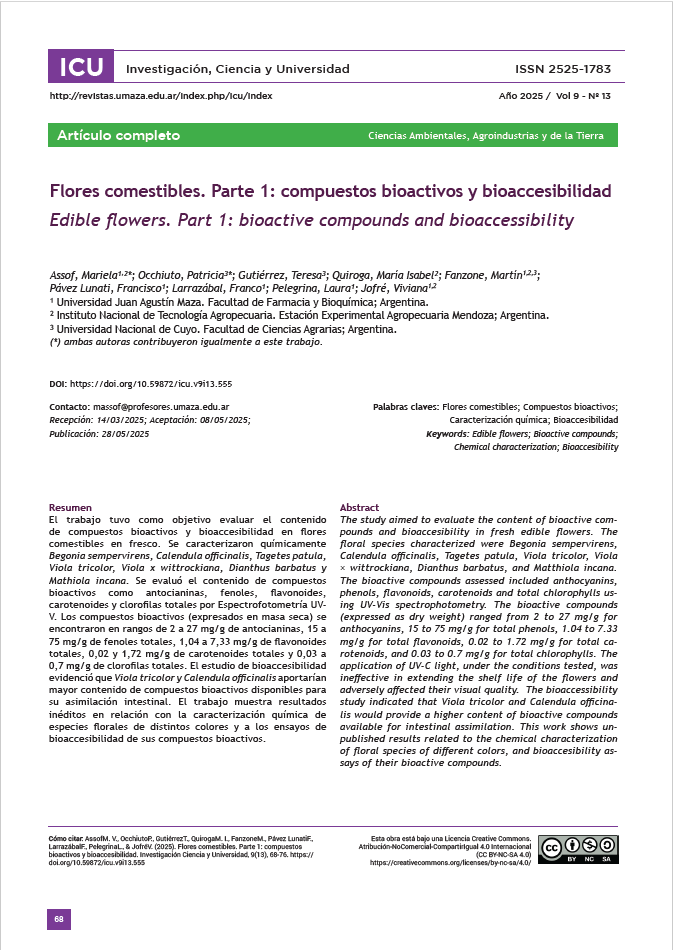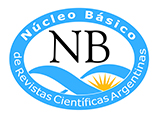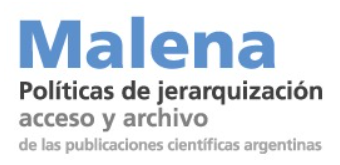Edible flowers. Part 1. bioactive compounds and bioaccessibility
Edible flowers. Part 1: bioactive compounds and bioaccessibility
DOI:
https://doi.org/10.59872/icu.v9i13.555Keywords:
edible flowers; bioactive compounds; chemical characterization, bioaccesibility, edible flowers, bioactive compounds, chemical characterization, bioaccesibilityAbstract
The study aimed to evaluate the content of bioactive compounds and bioaccesibility in fresh edible flowers. The floral species characterized were Begonia sempervirens, Calendula officinalis, Tagetes patula, Viola tricolor, Viola × wittrockiana, Dianthus barbatus, and Matthiola incana. The bioactive compounds assessed included anthocyanins, phenols, flavonoids, carotenoids, total chlorophylls, and antioxidant capacity using UV-Vis spectrophotometry. The total bioactive compounds (expressed as dry weight) ranged from 2 to 27 mg/g for anthocyanins, 15 to 75 mg/g for total phenols, 1.04 to 7.33 mg/g for total flavonoids, 0.02 to 1.72 mg/g for total carotenoids, and 0.03 to 0.7 mg/g for total chlorophylls. The application of UV-C light, under the conditions tested, was ineffective in extending the shelf life of the flowers and adversely affected their visual quality. The bioaccessibility study indicated that Viola tricolor and Calendula officinalis would provide a higher content of bioactive compounds available for intestinal assimilation.
Downloads

Published
How to Cite
Issue
Section
Categories
License
Copyright (c) 2025 Mariela Vanesa Assof, Patricia Occhiuto, Teresa Gutiérrez, María Isabel Quiroga, Martín Fanzone, Francisco Pávez Lunati, Franco Larrazábal, Laura Pelegrina, Viviana Jofré

This work is licensed under a Creative Commons Attribution-NonCommercial-ShareAlike 4.0 International License.





















